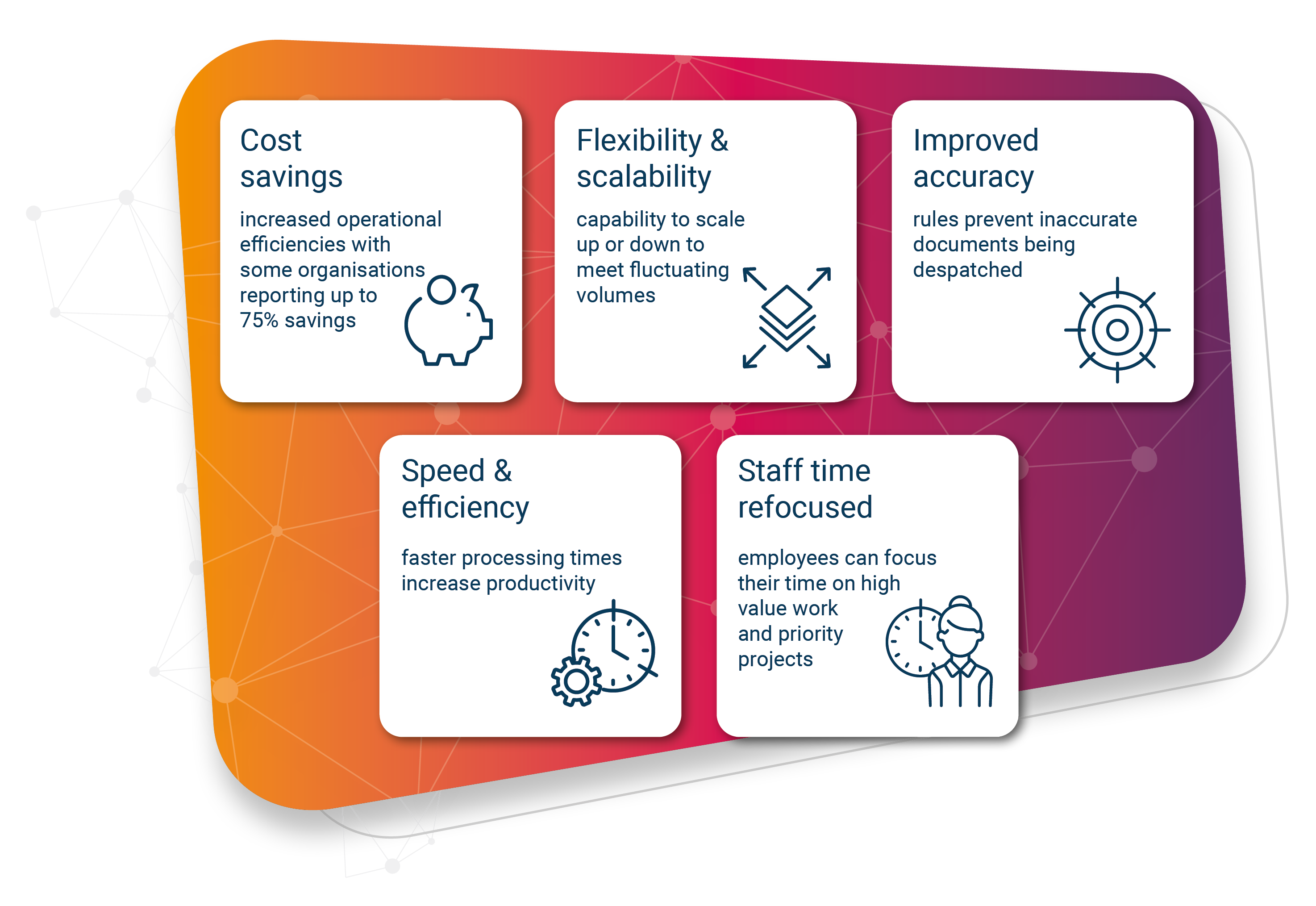As we start a new decade and Industry 4.0 gathers pace, advances in technology and growing customer and employee expectations continue to increase the pressure for more productivity, to deliver exceptional experiences and to streamline costs.
A recent study by the CBI and Oracle reported that the adoption of digital technologies, along with better management practises, could add £100 billion to the UK economy and cut income inequality by 5%.
In response to this, an estimated 72% of companies expect to embark on the process of digital transformation, investing in technology to increase competitiveness.
Document automation is an important step in digital transformation, and early adopters in finance, HR, operations, customer services and IT are already seeing the benefits of improved productivity and quality alongside reduced operating costs.
Whatever your role, processing documents is likely to be a necessity in the day-to-day operations of you or your team; whether it’s the distribution of customer documents, invoicing, and producing statements, or delivering time-critical employee communications – the ongoing challenge here is to produce and deliver these documents in an efficient, secure and compliant way.
Over the last few years, more people have turned to document automation as a fast and efficient solution to free up time to focus on other more interesting and rewarding tasks. Document automation can scale production up or down seamlessly in response to demand, whilst reducing the risk of human error and generating possible cost savings of up to 75%. It’s these drivers that will see a significant shift and adoption of document automation in the next five years.

The changing ways in which we work are also driving digital transformation, including document automation. It’s no longer a requirement to have centralised, fixed location roles and we see workers free to do their jobs from home or different sites. Data from the Office of National Statistics (ONS) reveals that by 2020, half the UK’s workforce (32.4 million people) is expected to be working remotely.
The 21st century is about always being connected with employees and customers, demanding engaging, accurate and timely information across digital and printed communications 24/7. Organisations will increasingly expect their teams to deliver these multi-channel documents according to customer preference, whether that is via paper or directly to mobiles or laptops. Data-rich communications will also have to be increasingly secure and trusted.
As we enter a new decade of innovation and technology progression, we will start to see even more powerful, intuitive and complex technologies leading to more game-changing solutions and applications. It can be beneficial to you and your team to be aware of some of these trends to help keep you on the front foot of the digital transformation age.

Document automation, for example, will increasingly use data intelligence to determine if a communication is best suited for a particular channel based entirely on user preference or previous interaction. Equally, the growth of 5G will heighten the demand for immediate communication and information on the go. To reach new audiences, companies will need to go beyond the PDF and create more engaging content in the form of video and interactive media. Customer-facing tools will continue to develop and become more prominent with an emerging trend for organisations looking to interact and assist customers using hybrid chat to improve customer service.
We are increasingly seeing documents being digitised so that it is more accessible and can be processed online but NLP (natural language processing) and RPA (robotic process automation) take this to the next level, mixing human and technology capabilities. Like any digital transformation, for document automation to work successfully we need to understand the strategy behind the transformation, rather than just introducing a digital system and expecting transformation to follow.
If you’re interested in reading more about the Future of Document Automation in your role, we’ve written a white paper that can help you achieve and maintain a competitive edge with document automation.


